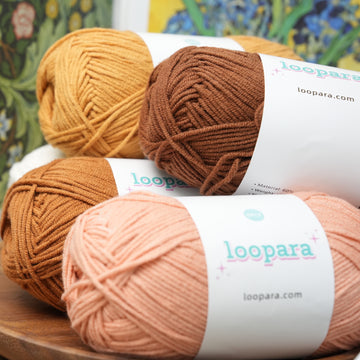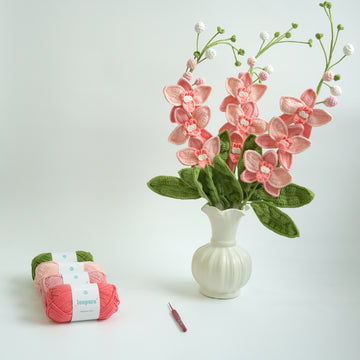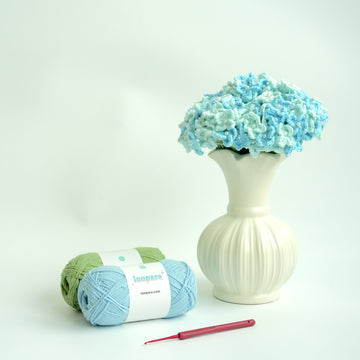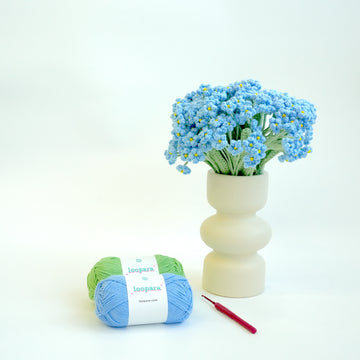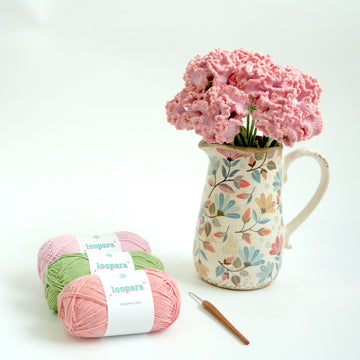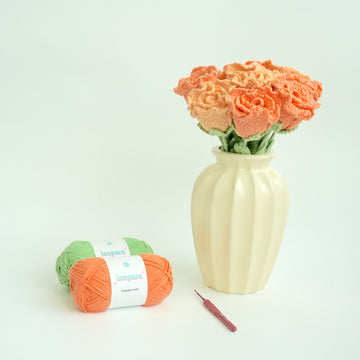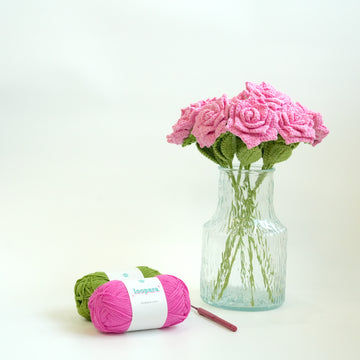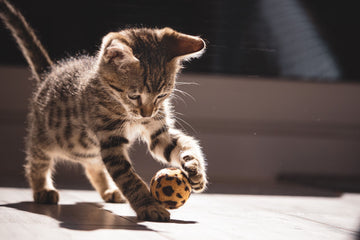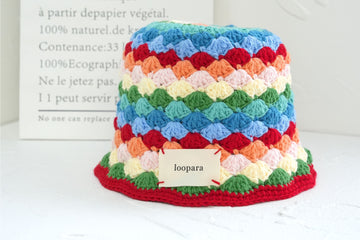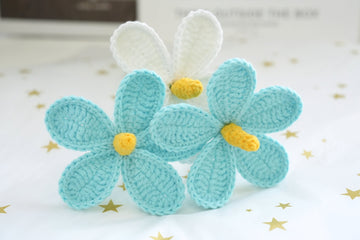Crocheting a garment is a wonderful way to create a truly unique piece. But how long does it take to crochet a sweater?
We’re going to explore the different factors that will determine the answer to that question. And we’ll suggest some hints and tips to estimate how long your own project will take.
Ready? Let’s get started!
What determines how long it takes to crochet a sweater?
If you search online for how long it takes to crochet a sweater, you’ll find a whole range of different answers.
There are people who sat they’ve finished one in three days while binge watching box sets of their favorite TV show. Others will tell you they’re months into their project, with no end in sight.
Of course, if you’re able to spend whole days crocheting, you’ll get it done quicker than someone who can only spare an hour or two each evening. So thinking in terms of days or weeks isn’t very helpful.
An estimate in hours is much more meaningful. And you’ll sometimes see people quoting an “average” time of about 30 hours to crochet a sweater.
But the reality is, there’s no such thing as “average” here. A whole range of different variables will affect the length of time an individual project takes:
- the size of the sweater
- your level of crocheting skill and experience
- the weight of the yarn you’re using
- the size of the hook
- the complexity of the pattern.
Let’s look at each of these in turn.

The size of the sweater
A sweater for a newborn baby will be a far smaller project than one for a grown man. Supposing everything else is the same – the yarn, hook and pattern – that baby sweater is going to take you a lot less time.
If you’re making a sweater in a different size, but using a similar pattern and yarn to one you’ve already made, you have valuable information. The amount of time it took you to crochet that other sweater can help you estimate the time you’ll need for the next one.
To do that, add up how many stitches you crocheted for Sweater Number 1. Multiply the number of stitches per row by the number of rows for each section. Then add the answers together to give you the grand total. Now do the same for Sweater Number 2.
If Sweater Number 2 has twice as many stitches as Sweater Number 1, it’s likely to take you about twice as long.
You can use the same principle to give you a rough estimate for any size difference. Just work out how much bigger or smaller the sweater you’ve already made is than the one you’re about to start. Then multiply the answer by the time you took to make your first sweater.
For example:
Sweater 1 – 1,000 stitches. This one took you about 20 hours to complete.
Sweater 2 – 1,600 stitches.
1,600 / 1,000 = 1.6
20 x 1.6 = 32
So Sweater 2 will take around 32 hours to complete.
Of course, this all supposes that everything about the two sweaters is the same apart from the size. If you’re making cute matching sweaters for a parent and child, it might be. Otherwise, your estimate will need to account for changes in the pattern or yarn too.
Your skill and experience
It stands to reason that the more experienced you are, the faster you’ll crochet. A sweater that an experienced crocheter takes 30 hours to complete might take double that or longer for someone who’s just starting out.
If you’re trying out a new stitch or hook size, you might find everything takes longer too. And if things don’t go perfectly the first time, you’ll need more time for frogging (i.e. unpicking stitches) to deal with errors.
One way of getting an estimate of how long your project might take you is to make up a gauge swatch. This is a small section of the fabric that will make up your finished sweater.
You’ll crochet the gauge swatch using your chosen hook and yarn, and following the sweater pattern. Most gauge swatches are about 4 inches square.
When you’ve completed your swatch, you’ll know how long it took you to make it. So if you can estimate how many four by four squares it would take to make up a whole sweater, you’ll have a starting point to estimate the total time requirement.
Of course, that will only tell you how long it might take you to crochet the fabric for your sweater. You’ll also need to build in time for weaving in ends and stitching pieces together. You may want to block your finished sweater too, to give it a professional finish.
All those parts of the process will add to the total time requirement for the project.
The yarn weight

If you want to complete a sweater as quickly as possible, choosing a heavy yarn can be a big help. In crochet, yarn weight refers not to mass but to how thick the threads are. A thicker thread means each stitch will be larger, so you’ll need fewer of them to work up the fabric.
If you want to complete your project quickly, choosing a chunky, extra-chunky or jumbo yarn will give you a head start. Conversely, a thinner yarn will take longer.
If you’re used to crocheting with lighter weight yarns, though, bear in mind that heavier ones can take some getting used to. Don’t be surprised if you take a little longer to form your stitches while you adapt.
Also Read: 4 Best Yarn for Crochet Sweaters
The size of your crochet hook
Generally speaking, the thicker the yarn you use, the larger the crochet hook you’ll use too. But sometimes people choose an unusual hook and yarn combination to get a particular effect.
Using a larger hook with a thinner yarn, for example, will give you a very open, lacey fabric. A smaller hook with a thicker yarn will give you a denser fabric, suitable for projects like amigurumi (crocheted toys).
If you want to work up your sweater more quickly, a larger crochet hook will help. It can also be a good choice if you find your tension tends to be on the tight side.
Also Read: Crochet Hook Size Chart & Guide
The complexity of the pattern
Are you planning to follow a pattern to make your sweater, or will you be designing it yourself?
If the latter, you’ll need to build in extra time for the design stage, as well as for taking notes as you go.
If you’re following a sweater pattern created by someone else, how long it takes to make will depend on its complexity.
Patterns that include long sleeves and embellishments like crocheted belts will be more complicated and take longer. Colorwork will require extra time to weave in the ends of different yarns. And different stitch combinations can be more challenging too.
Of course, there’s a close relationship between pattern complexity and your own experience as a crocheter. If you’re already a dab hand at crocheting the required stitches, you’ll breeze through the pattern faster than someone who’s learning as they go.

How to crochet a sweater fast
All the different variables mean it’s difficult to predict exactly how long it will take any individual crocheter to produce a sweater. But if you want to finish your project as quickly as possible, there are several steps you can take:
- Schedule your crochet time. Setting aside time to work on your project means you’re less likely to take long breaks between sessions. And that will minimize the time you have to spend getting back into the swing of the pattern again.
- Choose a ready-made pattern. With a ready-made pattern, you won’t have to spend time up-front on design, or on making adjustments as you go. It also means you can…
- Choose a pattern that suits your skill level. If you want to make progress fast, you don’t want to spend time learning new stitches or techniques.
- Choose a simple pattern. A sleeveless or short-sleeved sweater will be faster to complete than one with long sleeves. Steer clear of embellishments like ruffles, belts or puffed sleeves. And stick to a single color of yarn to keep things simple.
- Select a heavier weight yarn. The thicker the yarn, the faster it will work up the fabric required for your sweater.
- Use a larger crochet hook. This will complement the heavier yarn and help you work up the fabric fast.
How long does it take to crochet a sweater?
So to sum up: how long it takes to crochet a sweater depends on lots of different factors.
The size of the sweater, the complexity of the pattern, and your own level of skill and experience will all help shape the answer. Thicker yarns and larger crochet hooks will help you work up fabric fast. Delicate, lacey fabrics with thinner yarns will take longer.
Working up a gauge swatch is a good way to test how long it takes you to make a sample of the fabric. And that can help you estimate the time required to complete your sweater.


